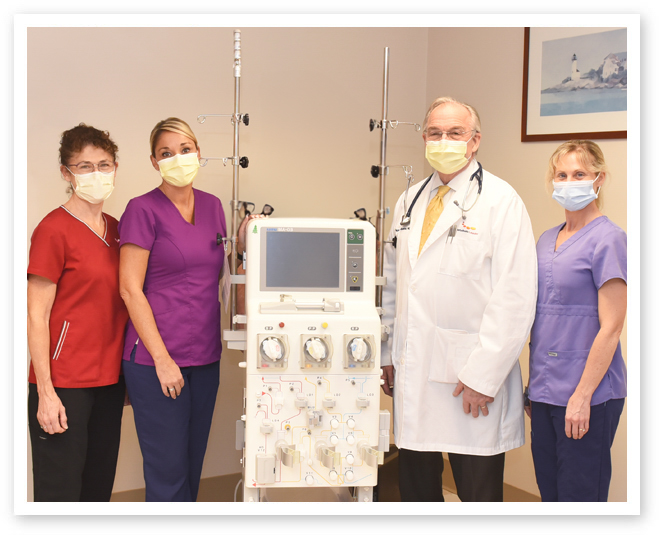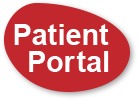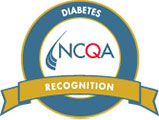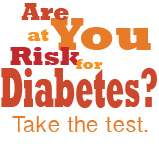Apheresis for Hyperlipidemia
Metabolic Leader offers one of the nation’s largest LDL apheresis units and is the only one in the state of Maine. The Leonard Keilson Apheresis Unit was named after the physician who first established this procedure in Maine. This treatment is reserved for those patients who have high LDL cholesterol that is refractory to standard lipid lowering therapy. These candidates have not responded adequately to diet and maximum tolerated drug therapy for at least six months. It is a treatment of “last resort” and must be approved by the patient’s insurance company. Each prospective patient is seen within the Metabolic Leader Lipid Clinic and evaluated for potential candidacy. Consequently, all procedural requirements for apheresis are confirmed, insurance coverage is determined and patient education is performed. If the patient decides that this treatment option is right for them, we proceed with an evaluation by the nursing staff.

The LDL apheresis unit is staffed by four nurses who have been trained and certified in this highly specialized procedure by Kaneka, the manufacturer of the LIPOSORBER System. Patients are evaluated for venous access and some patients are recommended to have a surgical procedure called arteriovenous fistula done because their veins are too small to routinely support the procedure. Others have adequate peripheral intravenous access to perform the procedure without any difficulty.
Typically, the procedure lasts approximately three to four hours and is done every two weeks. The LIPOSORBER System is a state-of-the-art computer that controls and monitors the removal of LDL cholesterol from the blood. To begin the procedure, the patient is anti-coagulated with Heparin to keep the blood from clotting while it is removed from the body. Then, the blood is withdrawn from a vein in the arm and sent through a tube to the LIPOSORBER System machine, where the plasma is separated from the red blood cells. The plasma flows through specialized absorption columns within the system that use chemically coasted cellulose beads to attract the LDL particles, removing the “bad cholesterol” from the blood. All system parts that come into contact with the patient’s blood are sterile, used for one treatment only, and then discarded. After the LDL is eliminated, and discarded as waste, the plasma is recombined with the red blood cells and pumped back into the patient’s body. The automated system has multiple safety features and side effects are rare. Further, the nurses operating the system remain with the patient to monitor them throughout the treatment.
LDL apheresis is a safe procedure with a low risk of side effects. Since 1987, there have been more than 300,000 treatments performed worldwide. Though uncommon, possible complications may include:
• Increased bleeding in the days following the procedure
• Chills
• Fatigue
• Nausea or vomiting
• Chest pain (agina)
• Infection
• Too much or too little fluid in the bloodstream
• Air in the bloodstream (air embolism)]
• Low blood pressure during the procedure and for a few hours afterward
This technique is approved by the FDA and clinical outcome trials have shown benefit from this therapy. This procedure has shown to reduce LDL cholesterol 73-83% after a single session. This dramatic reduction of cholesterol from LDL apheresis results in improved clinical outcomes and prevention of cardiovascular disease.
 Michele Supervising RN, Kara RN, Stephan Babirak PhD, MD, Sarah RN
Michele Supervising RN, Kara RN, Stephan Babirak PhD, MD, Sarah RN
Apheresis is a lifelong therapy. The number of LDL particles builds up again after treatment, so the process must be repeated at about two-week intervals in order to keep the LDL-cholesterol levels under control. Patients must continue their diet and cholesterol-lowering medications after starting apheresis treatment. Many patients also note the relief of symptoms caused by cardiovascular disease, such as angina (heart pains) or a decrease in claudication (pain the legs when walking).
A video and handouts which describe the technique in greater detail are available at our office for prospective patients.
Apheresis Patient Video Testimonials
![]()












